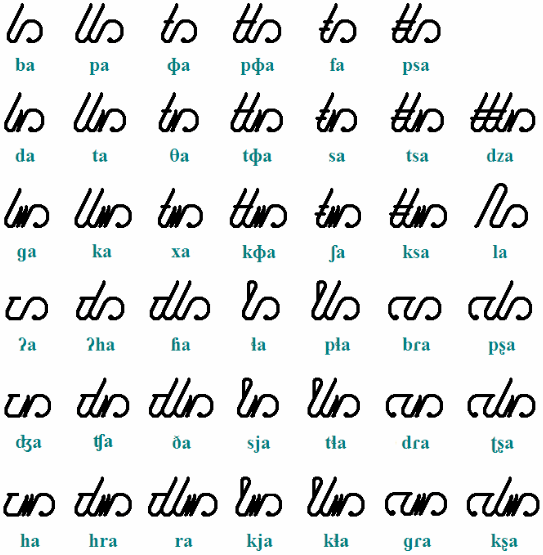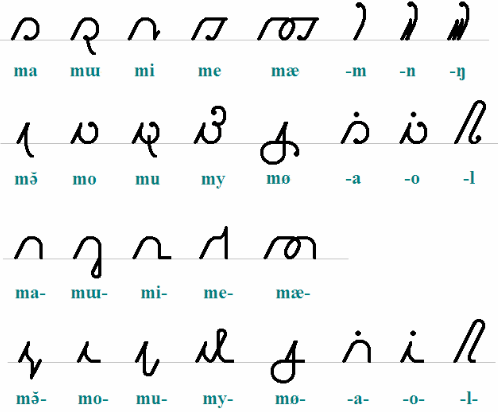This is another easily hand-written, phonetically constructed alphabet from my Phonological Cypher series. It has a large number of consonants, including co-articulates, grouped into shape families. It is a cursive syllabary, where CV syllables form a single stroke. If several syllables in a row have voiced continuants as consonants, the syllables can be joined together.
Consonants
One of the main ideas here began in the script Hongsa. It takes advantage of the fact that a series of tight up-down squiggles can be differentiated by number of strokes, if their endpoints are obvious. Consider these six squiggles, all starting at the baseline, but ending either up or down.
The visible difference between those that end the same way is actually two strokes, not one; so the thicknesses differ to such an extent they are easily discernable.
These squiggles are used as a component which signals where in the mouth the phoneme is produced, and is the point where the vowel shapes attach. The simplest forms are one/two/three up-strokes starting at the baseline, and these are the nasals: front, middle and back. A diacritic for each makes some useful voiced continuants: voiced fricatives and approximants. Here, the curving final vowel shape [a] is joined to the top right of each consonant.
These voiced continuants start at the baseline and so can join to previous syllables (see below). For the rest of the consonants, a “manner” prefix is given to the base shape. The one/two/three stroke squiggle still shows the location in a roughly regular way. All except for [l] start their strokes high and/or do not join to a previous syllable. Some glyphs have a built-in secondary medial or co-articulated consonant.
Vowels
Vowel shapes attach to the top right of their consonant. Here the vowels are shown with consonant [m]. Rounded vowels and schwa drop straight down. Syllabic final nasals and [l] have their own glyphs. Short schwa will be voiced or unvoiced depending on its consonant. For the second vowel of diphthongs, the [m]-initial forms are used but marked with a dot above. The top two rows shown here are solo/final forms, the bottom two rows show medial forms. Medial [l] is not ambiguous with an [m] vowel since [-lm] or [ml-] would make use of syllabic finals.
Example
This is the first line of Shakespeare’s sonnet 18, for comparison with versions of SIGIL etc.
Shall I compare thee to a summerís day?





